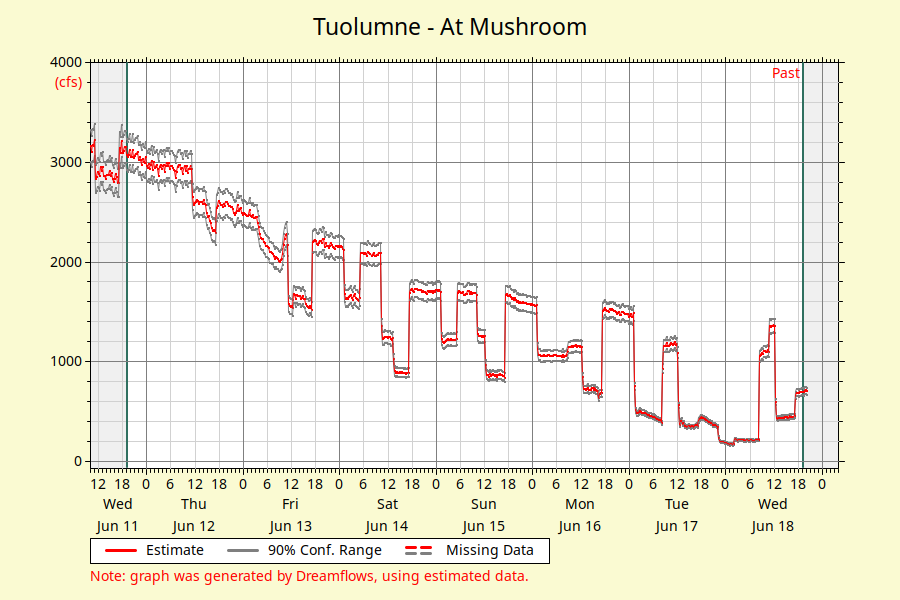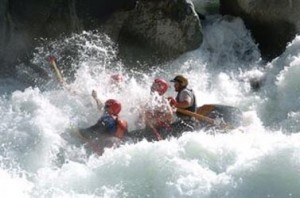Flows
Optimum flows for kayaks range between 600 – 1500+ cfs and rafts can maneuver well at 800 – 1800 cfs. Canoes of any kind are discouraged (let’s just say quick maneuvering in tight spaces=no room for a canoe), inflatable kayaks and catarafts can be dicey but a riot for those watching the carnage downstream and tubing (though supposedly it has been done) is just downright crazy!
Cherry Creek Flows Chart

Dreamflows – Cherry Creek Flow Chart
Cherry Creek Flow Descriptions
- 1000 – 1500 CFS = Medium flows. Challenging Class V+ whitewater, exciting for veterans. Previous experience needed. Big drops over and around huge boulders mean quick maneuvering around powerful obstacles. Difficult and long swims are possible should someone fall out of the raft.
- 1500 – 2200 CFS = High flows. Very challenging Class V+whitewater, with powerful and fast moving water. Rapids consist of big drops into giant holes with very turbulent water. Calms between rapids are short and swift. Participants should be very athletic and aggressive and have previous Class IV+ rafting experience.
CFS=Cubic Feet per Second
Flow Tip
Cherry Creek is a challenging run, and the water stops releasing at 11am. You should definitely get started early, which probably means you should do your celebrating the night after instead of the night before your trip.
Tuolumne River Watershed
Cherry Creek is an upper tributary of the Tuolumne River. After winter, even normal spring runoff makes the water too high to run until the flow begins to be regulated by Holm powerhouse and upstream reservoirs. This typically begins by mid-July. Depending on the snowpack, this river runs well through Labor Day for whitewater rafting, kayaks can continue to navigate Cherry Creek into the fall.
